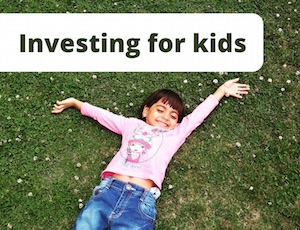Warren Buffett is a nifty picker of stocks. In hiring Ted Weschler to help select investments at Berkshire Hathaway, he’s turned out to be a nifty stockpicker-picker, too.
Buffett would hardly have hired a bozo – it was nailed-on that former hedge fund manager Weschler could pluck an Apple or an Amazon from the also-runs.
But new figures prove Ted Weschler has some truly serious investing smarts.
DIY tax haven
Ted Weschler’s returns have surfaced after a huge kerfuffle in the US about Roth IRAs – a kind of retirement tax shelter that’s closest to the UK’s ISA.
It turns out some savvy American moguls have managed to use these mainstream tax shelters to shelter vast fortunes from the taxman.
In particular, tech mogul/bogeyman Peter Thiel has amassed $5bn in his ‘retirement account for the middle class’, according to ProPublica.
Can you imagine if James Dyson, say, was revealed as having a billion pounds in his ISA?
Even million pound ISAs are mostly marketing pornography. A billion pound ISA would be the money shot to end them all.
Well more or less that’s what’s happened in the US.
Check out ProPublica for the details of how Thiel did it. The short version is he was able to stash a few thousand dollars in very cheap unlisted shares in a startup into his Roth IRA, and those multiplied into millions. His snowball supercharged into an avalanche. The rest is compound interest.
What Thiel did wouldn’t actually be possible in an ISA (sorry James!) due to restrictions on what you can hold in the UK vehicles.
If there’s a scandal, it would seem that – from my imperfect vantage point across the ocean – the Roth IRA rules weren’t sufficiently tight in the first place.
Weschler was here
So much, so Business As Usual for the taxes-are-optional uber-rich.
But the controversial $264m that Ted Weschler has similar been outed as having amassed in his Roth IRA is still notable for Monevator purposes.
You see, when ProPublica approached Weschler for comment about how he shoehorned all those millions into an account with tight contribution limits, he was (un)happy enough to tell them.
Weschler says that in the early years of his career he contributed to his employer’s IRA plan. He then converted it to a self-directed IRA, where he could make his own investments, claiming:
Over the ensuing 29 years (through the end date you quote of year-end 2018) I invested the account in only publicly-traded securities i.e., all investments in this account were investments that were available to the general public.
There follows some back and forth in the letter about US regulations and taxes that needn’t concern a humble investing blog in Blighty.
The key point is Weschler was picking from the same sort of stocks as a Reddit punter today. He wasn’t investing in unlisted microcap tech startups at the start of the Internet revolution.
And here’s the money shot:
…each $1 saved as a 22 year old in New York City grew over the ensuing 35 years to over $9,000 – certainly not an expected result, but the sort of example that can hopefully help motivate generations of future savers.
Well, quite. That is an extraordinary return!
In simple annualized terms it implies a near-30% return a year over 35 years.
Weschler smashed the market
I’m sure there were plenty of ups, downs, lucky breaks, and obscure – albeit still stock market-listed – investments in the mix for Weschler.
But to turn $1 into $9,000 in 35 years you have to be doing a lot very right.
The number of other famous investors who done as well over such a long period is not high.
- Buffett clocks in at around 20% annualized, albeit he did much better in his early days with less money.
- From memory George Soros comes in at around 20%, too.
- Peter Lynch achieved about 30% in annual returns for his investors at Fidelity for a dozen years before hanging up his spurs.
- Although… Joel Greenblatt, the professor and fund manager who wrote the wonderful You Can Be A Stock Market Genius has a private partnership Gotham Capital that boasts 40% returns.
You’re slacking, Ted!
Could you be the next Ted Weschler?
As this blog’s resident naughty active investor, am I inspired and motivated by Ted Weschler’s prowess, as he suggests we all could be in his letter?
Honestly, yes and no.
I’ve long known it’s possible for a small proportion of people to achieve market-beating returns. And I believe such outperformance is far likelier to be done by directly investing in shares – as opposed to by running or investing in funds, with their contradictory incentives and fee drags, respectively.
The trouble is it’s hard to get truly stonking rich without managing other people’s money, and taking and compounding that fee tithe for yourself.
That’s what makes Weschler’s returns so astounding.
In principle it shows what’s possible – at least if you started in 1985 and you’re either an investing savant or one of the luckiest people on the planet.
For context, if you could put the maximum £20,000 into an ISA every year for 35 years and achieve the same returns as Ted Weschler, you’d end up with…
£785,459,150!
Clearly that fails a few sanity checks as an aspirational stretch goal.
(Although I don’t doubt that – assuming no rule or contribution changes – we will eventually hear about £100m ISAs in my lifetime).
Many happy returns
I’ve been doing this for long enough to know that I’m not clocking up 30% returns annualized, and I’m never likely to, either.
So Weschler’s returns can only motivate me so far.
Don’t get me wrong, I’m pleased with my own record. And I’ve mostly enjoyed nearly 20 years of investing in individual shares. No regrets.
But am I set to turn £1 into £9,000 in 35 years? Reader – I’ll probably need a few more years than that!
People will want to draw lessons from Weschler’s achievement. Without seeing his trades in detail, the lessons are likely to be platitudes.
And of course most people will have a happier life and end up richer if they passively invest through index funds. Even Warren Buffett says that.
But at least I now know why Buffett called up Ted Weschler for the role at Berkshire Hathaway, rather than me!
p.s. We’ve finally transitioned to a new email system. As best I can tell it’s all working great, but I did delete some email addresses that were bouncing. If you have any problems, I’d suggest re-subscribing. Have a great weekend!



